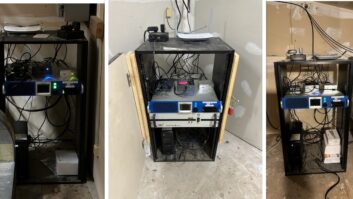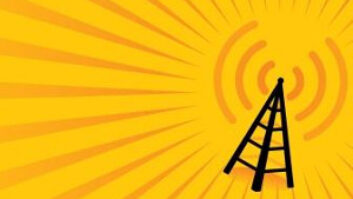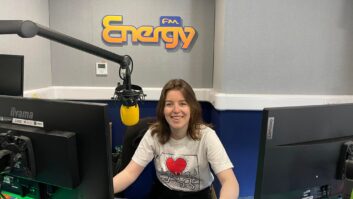With testing and evaluation of Ibiquity Digital’s in-band, on-channel digital audio system underway, the authorization of AM and FM IBOC transmission in the United States may soon become a reality. Many stations wishing to add IBOC as soon as possible to their present operation are planning for the additional equipment needed.
(click thumbnail)
But there seems to be a general lack of information available about the configurations and choices for adding IBOC to existing transmission systems, and perhaps applying more so to FM than AM.
Let’s consider some of the questions facing IBOC planners. Information in this article is based in part on questions posted on the popular Broadcast.net Web site by Tony Clark of Trinidad Broadcasting and the responses of the writer of this article.
1. When adding FM IBOC to my system, will I need more power for the analog transmitter than I use now, and if so, how much?
This will depend on the method of combining the analog and digital (A&D) components.
Your licensed, analog ERP should not change. If you keep your present analog transmitter, use your existing antenna, and install a standalone digital transmitter, you will need an A&D combiner. This combiner will have some loss for the analog input: around 10 percent seems to be a likely amount. Your standalone analog transmitter will need enough extra TPO to make up for that loss.
The A&D combiner also will have a significant loss to the digital component: possibly 10dB. So for proper ERPs, the digital transmitter will need to be rated for around 10 times the power needed to meet the authorized A-to-D ratio at the antenna connection.
The “common-amplification” type of IBOC transmitter that generates air-ready analog and digital components together eliminates the external combiner and its losses. If using this configuration, the analog output power would be the same as you use now, and IBOC power would be about one-tenth of that needed for high-level combining, given the same antenna system.
2. Is any software available to help plan FM IBOC RF systems?
The author of this article has written a program called FM Planner that allows easy calculation of A&D TPO for common amplification and high-level-combined systems, has lookups for exact line loss, antenna gain, testing for coax power handling and VSWR headroom at system TPOs, power density analysis and plot, etc.
Some of the broadcast equipment manufacturers and distributors are using the program, and will be glad to work with stations to help them define the right parameters.
3. Will an existing analog FM transmitter be able to pass FM IBOC too, and if so, at what percentage of its rated analog power?
It will if it has been designed or can be modified for common amplification. Some of the new solid-state FM transmitters are expected to be able to generate the A&D components of FM IBOC and supply them in a spectrum-compliant, combined form at a single output connector.
The power rating for the analog and IBOC outputs of a transmitter capable of common amplification will depend on the transmitter design as well as the IBOC peak-to-average ratio, the ratio of analog power to IBOC power and the spectrum mask for the total signal. These factors are still under development and/or test, and then will need FCC acceptance.
Depending on the factors mentioned in the last paragraph, certain new transmitters rated for common amplification may need an additional high-level filter after the transmitter to shape the digital output spectrum to fit within the FCC mask. The TPOs (A&D) of a transmitter needing such a filter will have to be increased to overcome the loss of that filter.
4. What if my present analog FM transmitter cannot be used for common amplification of IBOC?
A separate IBOC transmitter will be needed, along with a high-level combiner (possibly with a spectral filter) to couple the two transmitter outputs to a single transmission line and antenna.
5. What is the ratio of digital to analog power in an FM IBOC signal?
The last value heard is 20 dB, but that could change depending on the current field tests and FCC actions. It is assumed that this ratio is average digital power to average analog power. The peak-to-average ratio of FM IBOC also is not firm, but is expected to be around 6 dB.
It is unknown yet whether the FCC will license the digital ERP component in terms of its peak or its average value. If analog TV is an example, it will be the peak value.
Note that if a high-level spectrum-shaping filter is required, it may change the peak-average ratio of the digital component generated by the IBOC transmitter, so transmitter sizing, ERP calculations and FCC filings may need to account for this.
6. What audio processing and exciter program input configuration will be used for FM IBOC?
One configuration that has been proposed is for a single, unprocessed program feed from the studio to be split into two identical outputs, each of which will connect through separate audio processors to a separate input on the IBOC exciter.
The program line having processing suitable for analog FM broadcast will be looped in and out of delay circuits in the IBOC exciter to become the program source for the station’s analog FM exciter.
The program line having processing suitable for IBOC will be converted into the proper digital format in the IBOC exciter, and output as digitally-modulated RF.
With a common amplification transmitter, the outputs of the analog and IBOC exciters will be combined, amplified together, filtered if necessary, and routed to the antenna for broadcast.
In systems using separate analog and IBOC transmitters, the exciters will drive the appropriate, separate RF amplifiers, which then will connect to a high-level combiner/filter and single antenna system.
The sketch in Fig. 1 outlines the basic system blocks needed for common amplification and high level combining, as described above. Thanks to Harris’ David Agnew for his helpful comments on this subject.
7. Can I use my existing FM antenna for IBOC?
FM IBOC (and the best FM analog, for that matter) requires low system VSWR across the channel with symmetric characteristics for the two sidebands.
An acceptable antenna system might have a measured VSWR of, say, 1.1:1 at the analog center frequency, and preferably be flat, or at worst rise smoothly to a value not higher than 1.3:1 at +/-250 kHz. This level of performance is possible from most FM antennas and transmission lines in good electrical condition.
The center frequency input VSWR of many sidemounted antennas can be 1.3:1 or higher without optimization, so often the antenna system match needs to be adjusted for best performance after installation. This requires someone on the tower at the antenna input matching transformer, a person in the transmitter building with accurate instrumentation, and two-way communication. Optimizing antenna system VSWR would be a good step to take before starting FM IBOC operations.
Note that accurately measuring a VSWR value of 1.1 (return loss = 26.4 dB) requires good test equipment using a directional coupler having around 36dB directivity or better. Transmitter metering is designed mainly to protect the transmitter from high VSWRs, and often gives an artificially low or high reading for values of ~1.1 VSWR and less.
Separate test equipment with a high-directivity coupler, precision adapters etc are needed to give sufficiently accurate results.
For more on choosing antennas for FM IBOC, see the article on page 12 of the Jan. 17 issue of Radio World.












